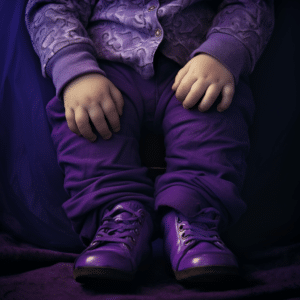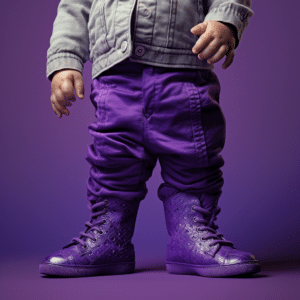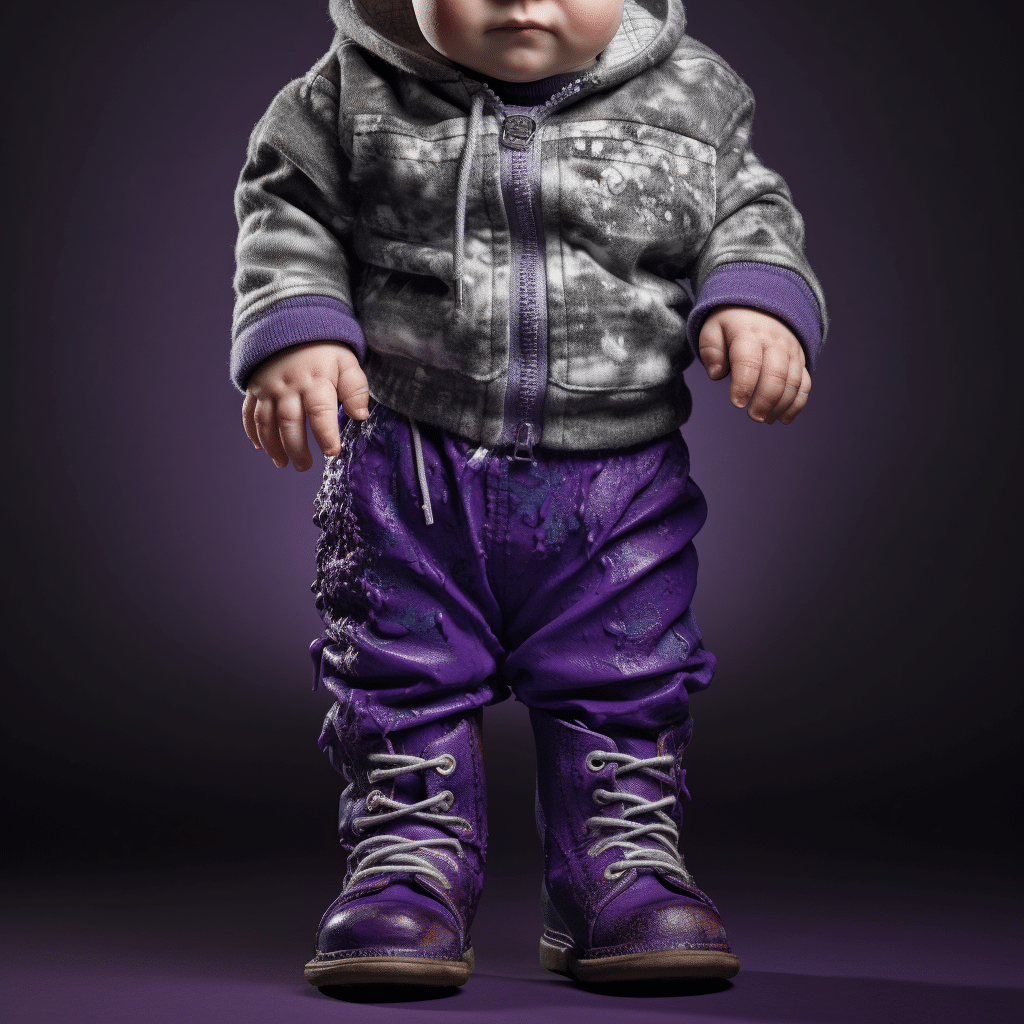Baby’s Legs Turn Purple When Held
It’s not just your imagination! Your baby’s legs could turn purple when you hold them. This could be an early sign of acrocyanosis, normally caused by low blood circulation. The low blood circulation could be due to blood vessel constrictions triggered by low temperatures or even underlying congenital heart diseases.
Normally, acrocyanosis affects newborns immediately after birth. Infants will exhibit purple discoloration on their legs for the first few minutes in response to low blood circulation. Most of the blood will be directed to essential organs like the brain and heart, leaving limbs under low supply.
However, this condition will easily resolve in a few minutes, immediately after the blood supply reaches hibernated parts. Here we dig deep into this condition, its causes, and its potential treatment.

Baby’s Legs Turn Purple When Held: Causes and Treatment
Cyanosis in Babies
Normally, Cyanosis occurs in many newborns exposed to oxygen deprivation for a few minutes. And as indicated above, Cyanosis usually appears as a blue-purple discoloration on the skin triggered by various medical conditions, including low blood pressure, heart failure, and sometimes lung disease or suffocation. In infants, it can often be triggered by various conditions like;
- Breathing problems lead to low oxygen supply. This could be due to a heart problem, pneumonia, or an asthma attack.
- A low oxygen level in the blood is caused by heart disease, lung disease, or chronic lung disease (such as emphysema).
- A low level of oxygen in the body due to anemia (low red blood cell count) that can occur at any time but most often occurs after birth
Types of Cyanosis
There are two most common types of Cyanosis
- Acrocyanosis
- Central Cyanosis
However, our main focus is on acrocyanosis, which is responsible for your baby’s leg discoloration due to incomplete blood circulation. Many infant doctors often consider it normal as it heals itself.
As mentioned, it mostly occurs immediately after birth, where blood is directed to crucial body organs like the brain and liver before reaching the legs. And it is safe to say that the condition is temporary as it will go away after a few minutes when blood eventually reaches the legs. The condition can also be due to coldness.
However, there isn’t an established true cause of acrocyanosis, as research is still in progress.
In the case of Central Cyanosis, it affects other central body parts like the mouth, lips, and head. As opposed to acrocyanosis, considered normal in infants, central cyanosis symptoms should worry you. Central cyanosis symptoms often signify oxygen deficiency due to lung or associated heart problems.
Understanding Acrocyanosis
There are two types of acrocyanosis:
- Primary
- Secondary
Primary acrocyanosis affects both sides of the body and limbs. For instance, if your baby’s right leg has turned purple, expect the same on the left. Primary acrocyanosis shouldn’t worry you at all, as a blood circulation twist causes it. It could be due to blood vessel constrictions from exposure to unusually cold temperatures, which you could easily resolve through warming.
With secondary acrocyanosis, its impact is evident on one side of the limb and is often accompanied by some pain, which could be of concern. Secondary acrocyanosis can be regarded as a symptom of an underlying disorder, which you should keep an eye on. It could be as serious as cancer or a blood disorder in most cases.
Treatment for secondary acrocyanosis typically involves treating the underlying cause of the problem. If you have anemia and your red blood cell count is low, treatment may include iron supplements and other iron-rich foods. If you have heart disease, you may need to reduce your sodium or potassium intake or increase your potassium intake.
Your doctor may also prescribe medications to help control your blood pressure and keep carbon dioxide levels in your system under control.
Symptoms of Acrocyanosis
Ideally, symptoms of acrocyanosis vary depending on temperatures. For instance, they may be mild in warm temperatures and severe in cold temperatures. But all advocates for acrocyanosis. Below are some;
- A blue or purple complexion on the palms of your baby’s hands and their feet and lips soles.
- Coldness in the affected areas, i.e., feet, hand
- Blood flow is slow.
- Overall, body temperature is low.
Diagnosis and Treatment of Acrocyanosis
The diagnosis of acrocyanosis in babies is usually made on a physical examination. Purple or blue skin discoloration can be seen in infants with acrocyanosis, especially in the legs. The discoloration may be mild, moderate, or severe.
However, it is easy to confuse acrocyanosis symptoms with Raynaud, a similar phenomenon in which blood flow is distracted from reaching extremities like legs and fingers. Raynaud, in most cases, results in disorders like Lupus which could prove humiliating in the long run. Just as acrocyanosis, Raynaud can be caused by coldness or stress.
There is no standard treatment option for acrocyanosis, so in most cases, doctors focus on alleviating the symptoms rather than the cause. So, infants should always keep warm, while adults with secondary acrocyanosis can be given alpha-blocker drugs.
Key Takeaways
Here is a quick summary of why your baby’s legs may turn purple when held;
Foremost, it could be the way you have held them. Maybe you have held them firmly enough to constrict blood flow in their vessels, limiting the oxygen supply in the legs. Try changing the hold to see if it helps.
Similarly, it could be due to coldness, triggering vessel constriction, slowing blood circulation to extremities.
However, you shouldn’t play cards with your infant’s health. Don’t just assume its coldness is causing the situation; consult with your doctor for a detailed examination.

Bottom Line
Baby’s Legs Turn Purple When Held Infants with primary acrocyanosis, which can be induced by cold temperatures, often have purple or blue legs when being handled. Treatment options for primary acrocyanosis are as simple as providing warmth to infants to relieve the symptoms, while in newborns, the condition will often go away on its own.
However, if the conditions persist, it could then be a symptom of secondary acrocyanosis. It usually bears profound implications, so you must immediately contact your doctor for examination.






